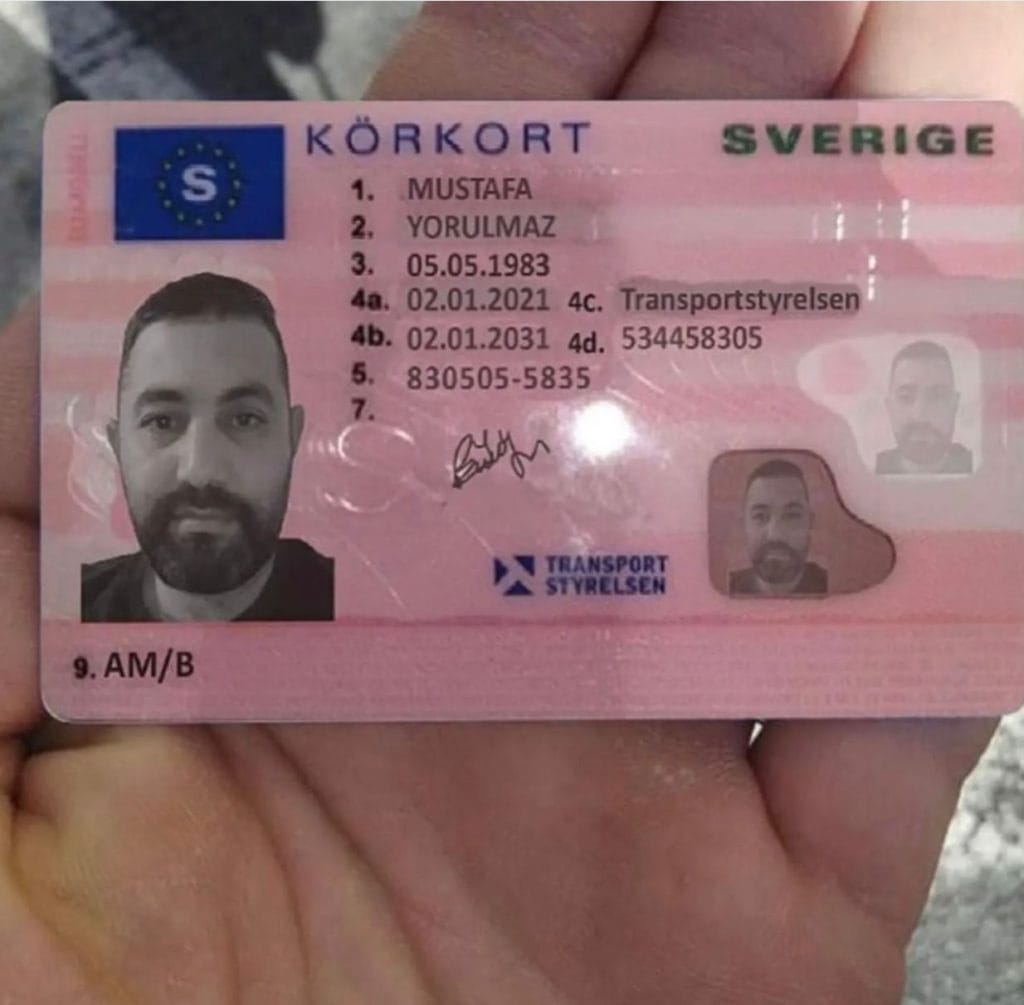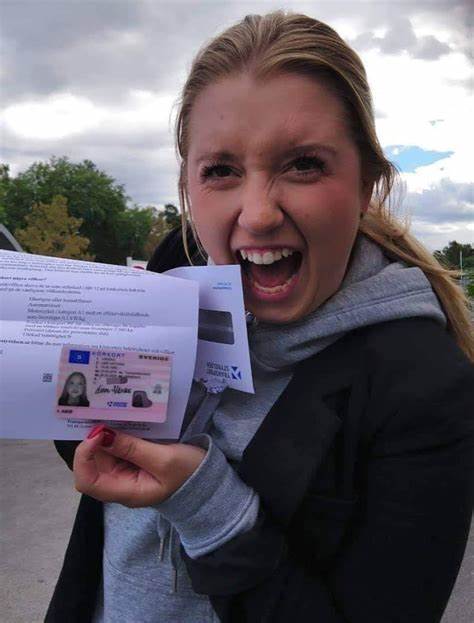The Reasons Buy Driving License Is Fast Increasing To Be The Hottest T…
페이지 정보

본문
The Comprehensive Guide to Legally Obtaining a Driving License
Driving is a fundamental ability for lots of, providing the liberty to travel where and when you want, often making life more hassle-free and pleasurable. Nevertheless, obtaining a driving license is a procedure that requires understanding, patience, and adherence to legal procedures. This guide aims to provide a comprehensive overview of the actions one must follow to legally acquire a driving license, highlighting essential factors to consider and regularly asked concerns to ensure a smooth and hassle-free experience.
Understanding the Basics
Before diving into the application process, it's essential to comprehend the standard requirements and kinds of driving licenses readily available. Driving laws vary considerably from country to nation, and even within various states or provinces within the very same nation. Normally, there are a number of types of driving licenses, consisting of:
- Learner's Permit: This is frequently the initial step in the procedure, enabling new chauffeurs to acquire experience under supervision.
- Provisionary License: Issued after passing a standard driving test, this license typically includes constraints and is a stepping stone to a full license.
- Full Driver's License: Once all the necessary requirements are met, motorists can obtain a complete license, which uses total driving opportunities.
- Commercial Driver's License (CDL): Required for those who wish to operate industrial lorries, such as trucks or buses.
Steps to Obtain a Driving License
1. Research Local Driving Laws
The initial step in getting a driving license is to look into the particular requirements in your area. Check out the main site of your local Department of Motor Vehicles (DMV) or comparable agency to discover in-depth details about the licensing process, consisting of age restrictions, required documents, and fees.
2. Prepare Required Documentation
Each jurisdiction has its own set of documents that should be submitted to make an application for a driving license. Frequently required files consist of:
- Proof of Identity: A passport, birth certificate, or state-issued ID.
- Evidence of Residency: Utility bills, lease arrangements, or other official documents that confirm your address.
- Social Security Number (if relevant): In some nations, a social security number or equivalent is needed for identification.
- Vision Test Results: Some locations need a vision test before providing a learner's license or license.
3. Take a Driver's Education Course
Numerous states and countries require new chauffeurs to complete a driver's education course. These courses are developed to teach the rules of the road, traffic laws, and safe driving practices. They can be finished online or in a classroom setting and frequently consist of both theoretical and practical elements.
4. Look for a Learner's Permit
When the needed documents is ready and the driver's education course is completed, the next action is to obtain a learner's authorization. This generally involves going to the DMV or sending an application snabbt körkort online [read on]. You will likewise require to pass a written test that covers traffic laws and driving understanding.
5. Practice Driving
With a learner's authorization, you can start practicing driving under the supervision of a licensed adult. This is a vital action in developing your self-confidence and abilities behind the wheel. It's likewise important to get experience in different driving conditions, such as night driving, highway driving, and driving in harsh weather.
6. Arrange and Pass the Driving Test
After getting enough driving experience, you can arrange a driving test with the DMV. The test will assess your ability to safely operate a lorry and follow traffic laws. You will need to bring a correctly registered and guaranteed vehicle to the test, and the inspector will assess your driving abilities on a fixed path.
7. Get a Provisional License
If you pass the driving test, you will typically get a provisional license. This license may include limitations, such as a curfew or a limitation on the number of travelers you can have in the lorry. These constraints are designed to minimize the risk of accidents and help new chauffeurs adapt to the road.
8. Upgrade to a Full License
As soon as you have held a provisionary license for the necessary duration and satisfied any additional requirements, you can upgrade to a full driver's license. This procedure typically involves an easy application and may need a retest or extra documentation.
Tips for a Successful Application
- Start Early: Begin the procedure as soon as you satisfy the age requirement to provide yourself sufficient time to prepare.
- Stay Informed: Keep current with any modifications in driving laws or DMV procedures.
- Practice Regularly: Consistent practice is key to developing confidence and improving your driving abilities.
- Stay Calm During the Test: Anxiety can impact your efficiency, so take deep breaths and stay focused.
- Follow DMV Instructions: Pay close attention to the instructions provided by the DMV and the examiner throughout your test.
Regularly Asked Questions (FAQs)
Q: What is the minimum age to use for a learner's authorization?
A: The minimum age varies by jurisdiction. In the United States, it generally ranges from 15 to 16 years old. In the UK, the minimum age is 17. Inspect your regional DMV website for specific information.
Q: Can I look for a driver's license online?
A: Some jurisdictions allow you to finish parts of the application process online, such as filling out kinds and scheduling tests. However, you will normally need to check out a DMV workplace personally to submit required documents and take the driving test.
Q: What occurs if I fail the driving test?
A: If you fail the driving test, you can normally retake it after a specific duration. This duration differs by place, but it is typically a couple of weeks. It's a great idea to practice more before retaking the test to improve your opportunities of success.
Q: Can I drive alone with a learner's permit?
A: No, a learner's permit normally requires you to be accompanied by a licensed grownup, generally over 21 years old, who is seated in the front guest seat.
Q: Is a vision test needed to get a driving license?
A: Yes, a lot of jurisdictions require a vision test to make sure that you can securely operate an automobile. You can typically take this test at the DMV or with an authorized optometrist.
Q: How long does it take to get a full driver's license?
A: The time required to get a complete driver's license differs depending on your jurisdiction and the specific actions included. Normally, it can take numerous months, including the time required to complete a driver's education course, hold a learner's license, and pass the driving test.
Q: Can I use a provisionary license to drive for work?
A: It depends on the limitations put on your provisional license. Some provisional licenses allow you to drive for work, while others may have specific limitations. Examine your license for information or call the DMV for explanation.
Q: What is the difference in between a student's permit and a provisionary license?
A: A student's license is the very first phase of the licensing process and enables you to drive only under supervision. A provisionary license, on the other hand, grants you more driving benefits but may still have some limitations, such as a curfew or passenger limits.
Q: Can I look for a commercial driver's license (CDL) without a full driver's license?
A: No, you typically require a complete driver's license before obtaining a CDL. A CDL is a customized license that requires extra training and testing, and it is just issued to those who have shown the ability to safely operate a standard vehicle.

Q: What should I do if I lose my driving license?
A: If you lose your driving license, you must report it to the DMV and use for a replacement. You may need to supply evidence of identity and pay a fee. It's also an excellent concept to notify your insurer and any other appropriate parties.
Getting a driving license is a significant milestone that opens up new chances and increases self-reliance. By following the steps laid out in this guide and remaining informed about local laws and requirements, you can make sure a smoother and more successful licensing process. Bear in mind that driving is a serious duty, and putting in the time to discover and practice is necessary for your safety and the security of others on the roadway.

- 이전글5 Tassimo Machine Bosch Projects For Any Budget 25.06.16
- 다음글The 10 Most Terrifying Things About Door Installation Contractors 25.06.16
댓글목록
등록된 댓글이 없습니다.

